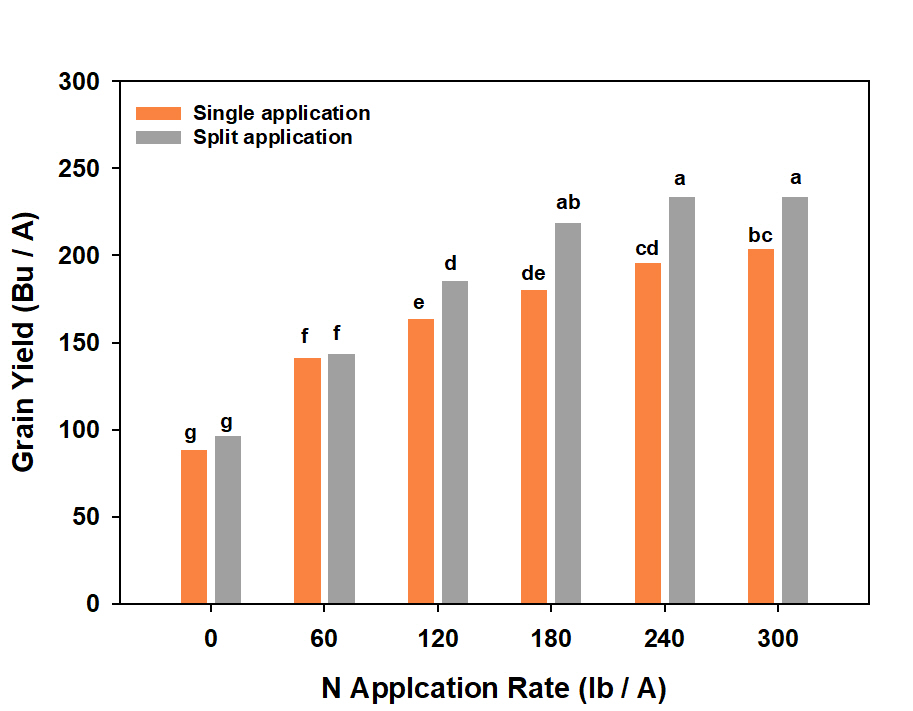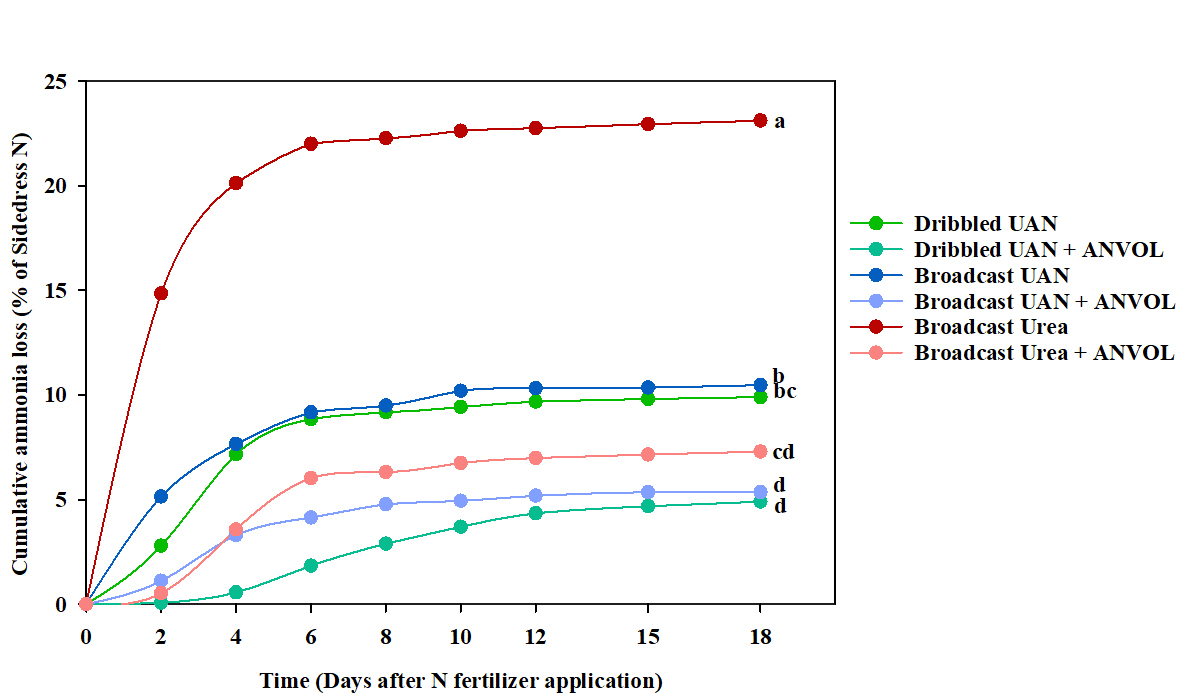Nitrogen (N) fertilizers may be a limiting factor for corn production based on rising N fertilizer prices and other production input. There are a few things to consider with high N fertilizer prices: (a) apply N fertilizer at the right time, (2) add or treat urea-based fertilizers with a proven N stabilizer, and (3) apply the N fertilizer at the appropriate N rate.
Apply N fertilizer at the right time
Preplant N application in corn is not recommended in Tennessee because of the length of time from application to when the corn plant will begin significant N uptake. One exception is the application of anhydrous ammonia with properly calibrated equipment. Corn plants take up little N (<12% of N uptake during the growing season) until V6 growth stage, with the most active period of N uptake occurring between V8 to V14. Hence, there is a greater risk for N loss via ammonia volatilization or nitrate leaching from preplant N. Split application is recommended when N rates are greater than 120 lb N/A. A typical split management practice is to apply a third of the total intended N per acre at planting and sidedress the remaining N fertilizer between V4 to V6. Split application also provides flexibility to adjusting N rate during growing season as compared to just a single application at planting. Split-application of a third of the recommended N at planting and sidedress the remaining N fertilizer provides greater yield than single application at planting (Figure Below-average across six trials). Add or treat urea-based fertilizers with a proven N stabilizer
Add or treat urea-based fertilizers with a proven N stabilizer
Urea-based fertilizers (Urea and urea ammonium nitrates), the most commonly used N fertilizers in Tennessee, are relatively susceptible to volatilization losses compared to other N sources. Ammonia loss from surface applied urea without N stabilizer (120 lb N per acre) can be more than 20% of the sidedress N applied, which is equivalent to more than 24 lb of N acre. Also, it is important to note that ammonia loss from urea is generally higher than UAN applied at the same N rate. Surface-applied UAN (10.3 – 23.3% of sidedress N) tends to be more susceptible to ammonia volatilization loss compared to UAN dribble between rows. Treating or adding an N stabilizer to urea-based N fertilizers is recommended if at least 1/4’” rainfall is not forecasted within two days after N application. Proven N stabilizers can reduce ammonia volatilization, particularly under conditions favorable for ammonia loss (Figure below). There are myriad N stabilizer products with different formulations and concentrations available on the market that claim to reduce N loss via ammonia loss and improve crop yield. UT extension publication, Enhanced Efficiency Nitrogen Fertilizer as a Tool to Control Nitrogen Loss in Row Crop Production, provides detailed information on some reliable N stabilizers.
Apply the N fertilizer at appropriate N rate
Current N application rates for corn production should be based on realistic yield goals. Adjustments can be made based on past production records and Pre-Sidedress Nitrate Test (PSNT) results if applicable. In Tennessee, only the PSNT is calibrated for corn production, and is recommended only for producers using animal manure, poultry litter or biosolids. Another tool available for estimating corn N rate is the Nitrogen Rate Calculator at www.utcrops.com which estimates economical N rate rather than highest yielding N rate, and is useful in years where fertilizer prices are very high or corn prices are very low. Recent studies across 10 trials in TN showed that the Economic Optimum Nitrogen Rate for dryland corn was 170 lb N/A based on the yield data shown in the figure below.

